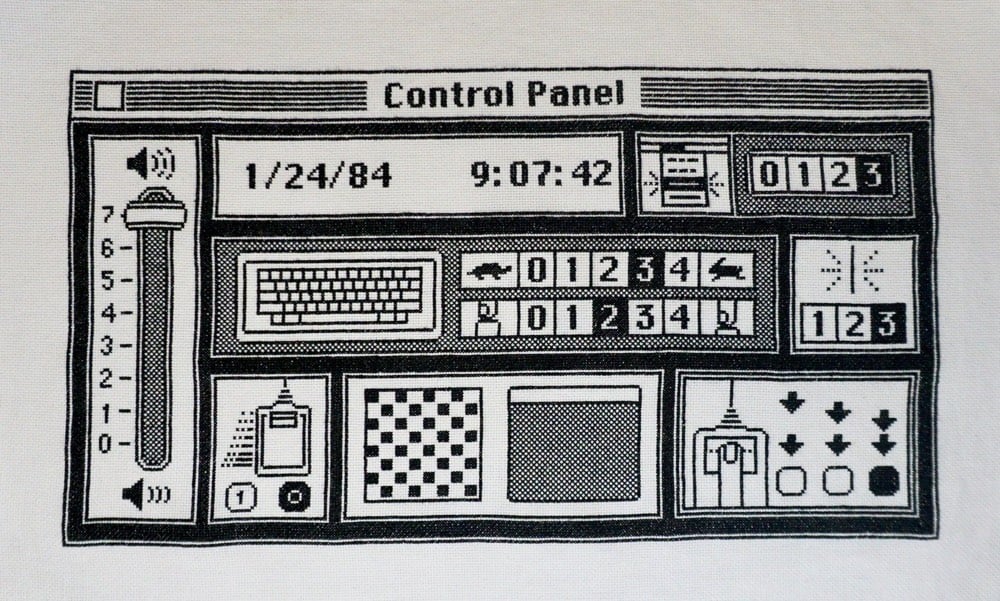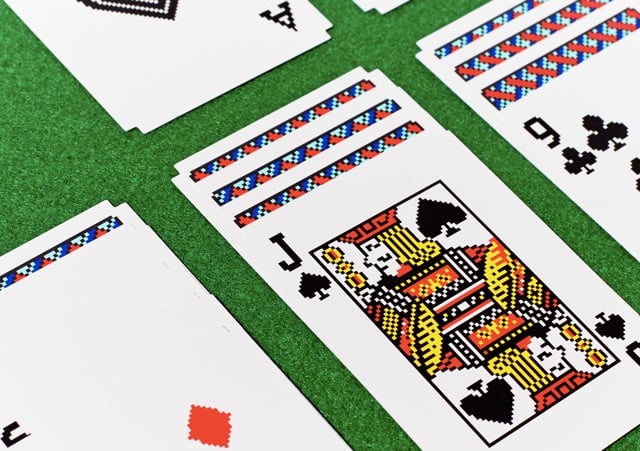Apple is celebrating the 30th anniversary of the Macintosh with a special subsite.
Incredible that the Mac is still around; the 90s were a dire time for Apple and it’s amazing to see the current fantastic iMacs and Macbooks that came after some epically bad mid-90s machines. Here’s Steve Jobs introducing the original Mac in 1984 (a snippet of the full introduction video):
Steven Levy writes about covering the introduction of the Mac for Rolling Stone.
First, I met the machine. From the instant the woman running the demo switched on that strange-looking contraption (inspired in part by the Cuisinart food processor), I knew the Macintosh would change millions of lives, including my own. To understand that, you must realize how much 1984 really was not like 2014. Until that point, personal computers were locked in an esoteric realm of codes and commands. They looked unfriendly, with the letters of text growing in sickly phosphorescence. Even the simplest tasks required memorizing the proper intonations, then executing several exacting steps.
But the Macintosh was friendly. It opened with a smile. Words appeared with the clarity of text on a printed page - and for the first time, ordinary people had the power to format text as professional printers did. Selecting and moving text was made dramatically easier by the then-quaint mouse accompanying the keyboard. You could draw on it. This humble shoebox-sized machine had a simplicity that instantly empowered you.
Here’s the piece Levy wrote for Rolling Stone.
If you have had any prior experience with personal computers, what you might expect to see is some sort of opaque code, called a “prompt,” consisting of phosphorescent green or white letters on a murky background. What you see with Macintosh is the Finder. On a pleasant, light background (you can later change the background to any of a number of patterns, if you like), little pictures called “icons” appear, representing choices available to you. A word-processing program might be represented by a pen, while the program that lets you draw pictures might have a paintbrush icon. A file would represent stored documents - book reports, letters, legal briefs and so forth. To see a particular file, you’d move the mouse, which would, in turn, move the cursor to the file you wanted. You’d tap a button on the mouse twice, and the contents of the file would appear on the screen: dark on light, just like a piece of paper.
Levy has also appended a never-seen-before transcript of his interview with Steve Jobs onto the Kindle version of Insanely Great, a book Levy wrote about the Mac.
Dave Winer participated on a panel of developers on launch day.
The rollout on January 24th was like a college graduation ceremony. There were the fratboys, the insiders, the football players, and developers played a role too. We praised their product, their achievement, and they showed off our work. Apple took a serious stake in the success of software on their platform. They also had strong opinions about how our software should work, which in hindsight were almost all good ideas. The idea of user interface standards were at the time controversial. Today, you’ll get no argument from me. It’s better to have one way to do things, than have two or more, no matter how much better the new ones are.
That day, I was on a panel of developers, talking to the press about the new machine. We were all gushing, all excited to be there. I still get goosebumps thinking about it today.
MacOS System 1.1 emulator. (via @gruber)
iFixit did a teardown of the 128K Macintosh.
Jason Snell interviewed several Apple execs about the 30th anniversary for MacWorld. (via df)
What’s clear when you talk to Apple’s executives is that the company believes that people don’t have to choose between a laptop, a tablet, and a smartphone. Instead, Apple believes that every one of its products has particular strengths for particular tasks, and that people should be able to switch among them with ease. This is why the Mac is still relevant, 30 years on-because sometimes a device with a keyboard and a trackpad is the best tool for the job.
“It’s not an either/or,” Schiller said. “It’s a world where you’re going to have a phone, a tablet, a computer, you don’t have to choose. And so what’s more important is how you seamlessly move between them all…. It’s not like this is a laptop person and that’s a tablet person. It doesn’t have to be that way.”
Snell previously interviewed Steve Jobs on the 20th anniversary of the Mac, which includes an essay that Jobs wrote for the very first issue of Macworld in 1984:
The Macintosh is the future of Apple Computer. And it’s being done by a bunch of people who are incredibly talented but who in most organizations would be working three levels below the impact of the decisions they’re making in the organization. It’s one of those things that you know won’t last forever. The group might stay together maybe for one more iteration of the product, and then they’ll go their separate ways. For a very special moment, all of us have come together to make this new product. We feel this may be the best thing we’ll ever do with our lives.
Here’s a look inside that first MacWorld issue.
As always, Folklore.org is an amazing source for stories about the Mac told by the folks who were there.
Susan Kare designed the icons, the interface elements, and fonts for the original Macintosh. Have a look at her Apple portfolio or buy some prints of the original Mac icons.
Stephen Fry recounts his experience with the Mac, including the little tidbit that he and Douglas Adams bought the first two Macs in Europe (as far as he knows).
I like to claim that I bought the second Macintosh computer ever sold in Europe in that January, 30 years ago. My friend and hero Douglas Adams was in the queue ahead of me. For all I know someone somewhere had bought one ten minutes earlier, but these were the first two that the only shop selling them in London had in stock on the 24th January 1984, so I’m sticking to my story.
Review of the Mac in the NY Times from 1984.
The Next Web has an interview with Daniel Kottke (no relation) and Randy Wigginton on programming the original Mac.
TNW: When you look at today’s Macs, as well as the iPhone and the iPad, do you see how it traces back to that original genesis?
Randy: It was more of a philosophy - let’s bring the theoretical into now - and the focus was on the user, not on the programmer. Before then it had always been let’s make it so programmers can do stuff and produce programs.
Here, it was all about the user, and the programmers had to work their asses off to make it easy for the user to do what they wanted. It was the principle of least surprise. We never wanted [the Macintosh] to do something that people were shocked at. These are things that we just take for granted now. The whole undo paradigm? It didn’t exist before that.
Like Daniel says, it’s definitely the case that there were academic and business places with similar technology, but they had never attempted to reach a mass market.
Daniel: I’m just struck by the parallel now, thinking about what the Mac did. The paradigm before the Mac in terms of Apple products was command-line commands in the Apple II and the Apple III. In the open source world of Linux, I’m messing around with Raspberry Pis now, and it terrifies me, because I think, “This is not ready for the consumer,” but then I think about Android, which is built on top of Linux. So the Macintosh did for the Apple II paradigm what Android has done for Linux.
A week after Jobs unveiled the Mac at the Apple shareholders meeting, he did the whole thing again at a meeting of the Boston Computer Society. Time has the recently unearthed video of the event.
Steve Silberman has a nice piece on Susan Kare, the woman who designed the original icons for the Macintosh, including a never-before-seen look at her initial sketches for some of them.
Inspired by the collaborative intelligence of her fellow software designers, Kare stayed on at Apple to craft the navigational elements for Mac’s GUI. Because an application for designing icons on screen hadn’t been coded yet, she went to the University Art supply store in Palo Alto and picked up a $2.50 sketchbook so she could begin playing around with forms and ideas. In the pages of this sketchbook, which hardly anyone but Kare has seen before now*, she created the casual prototypes of a new, radically user-friendly face of computing - each square of graph paper representing a pixel on the screen.







Stay Connected